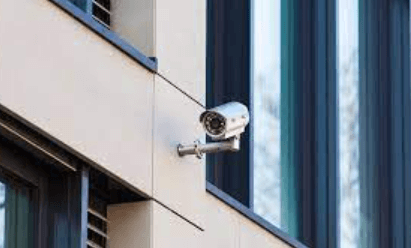
Outdoor security cameras are essential components of modern surveillance systems, providing crucial monitoring and protection for homes, businesses, and public spaces. However, exposure to varying weather conditions can compromise their functionality and durability. Waterproofing these cameras is paramount to ensure their longevity and consistent performance in harsh outdoor environments.
Choose a Weatherproof Camera
Selecting a weatherproof camera with a high IP (Ingress Protection) rating is the first step in ensuring waterproofing. Cameras with IP66 or IP67 ratings are designed to withstand dust, moisture, and water exposure. These ratings indicate the camera’s resilience to elements, making them suitable for outdoor use.
IP66-rated weatherproof camera exhibit high resistance to dust and can endure forceful water jets, rendering them suitable for various outdoor settings.
On the other hand, IP67-rated cameras offer superior protection against temporary water immersion and are particularly well-suited for severe weather conditions.
Proper Mounting
Effective mounting is vital for optimal performance of outdoor waterproof cameras. Follow these steps:
- Location Assessment: Survey the area for sheltered spots shielding the camera from rain or harsh weather. Avoid water-prone or sun-exposed areas.
- Optimal Height: Mount the weatherproof camera at an ideal height for clear surveillance, high enough to avoid tampering yet low enough for detailed footage.
- Sturdy Surface: Choose secure surfaces like walls or poles capable of supporting the camera’s weight and enduring weather conditions.
- Directional Placement: Adjust the camera’s angle for desired coverage while avoiding obstructions.
- Cable Protection: Shield cables from moisture using weatherproof conduits to prevent water damage.
- Seal Entry Points: Apply waterproof tape or sealant where cables enter the weatherproof camera housing to prevent water intrusion.
- Regular Maintenance: Inspect periodically, tighten screws, and clear debris to maintain the camera’s functionality.
Proper assessment, protection of cables, and regular maintenance ensure prolonged performance of outdoor waterproof cameras.
Use Waterproof Cables and Connectors
Utilize weatherproof or waterproof cables and connectors specifically designed for outdoor use. These cables and connectors are resistant to moisture penetration, preventing water damage to the camera’s internal components. Ensure tight and secure connections to avoid water ingress.
Some waterproof camera come with these waterproof connectors, like Techage waterproof camera 605GP .You can check the following picture to understand How To Install RJ45 Waterproof Connector?
Weatherproof Housing
Consider additional protection for the camera by using a weatherproof housing or casing. Compatible housings provide an extra layer of defense against harsh weather conditions while allowing proper ventilation to prevent moisture buildup inside the housing.Generally, bullet cameras made of metal are more waterproof and dustproof.
Seal Cable Entry Points
Seal cable entry points into the camera or housing using waterproof cable glands, specialized tape, or silicone sealant. Properly sealing these openings prevents water intrusion, safeguarding the camera’s internal circuitry and components.
Regular Maintenance
Regularly inspect and maintain the camera’s waterproofing integrity. Check seals, housing, cables, and connectors for any signs of wear, damage, or water ingress. Promptly replace any compromised parts to prevent further damage.
Follow Manufacturer’s Guidelines
Always adhere to the manufacturer’s guidelines and recommendations for specific waterproofing procedures related to your security camera model. Manufacturers often provide detailed instructions for maintaining the camera’s waterproofing features.
In conclusion, waterproofing an outdoor security camera involves a combination of choosing weather-resistant equipment, proper installation, and regular maintenance. By implementing these measures, you can enhance the camera’s resilience to outdoor elements, ensuring reliable surveillance and extended lifespan.
Remember, each camera model may have specific waterproofing considerations, so always refer to the manufacturer’s guidelines for the best practices to waterproof your particular security camera effectively.

Leave a Reply